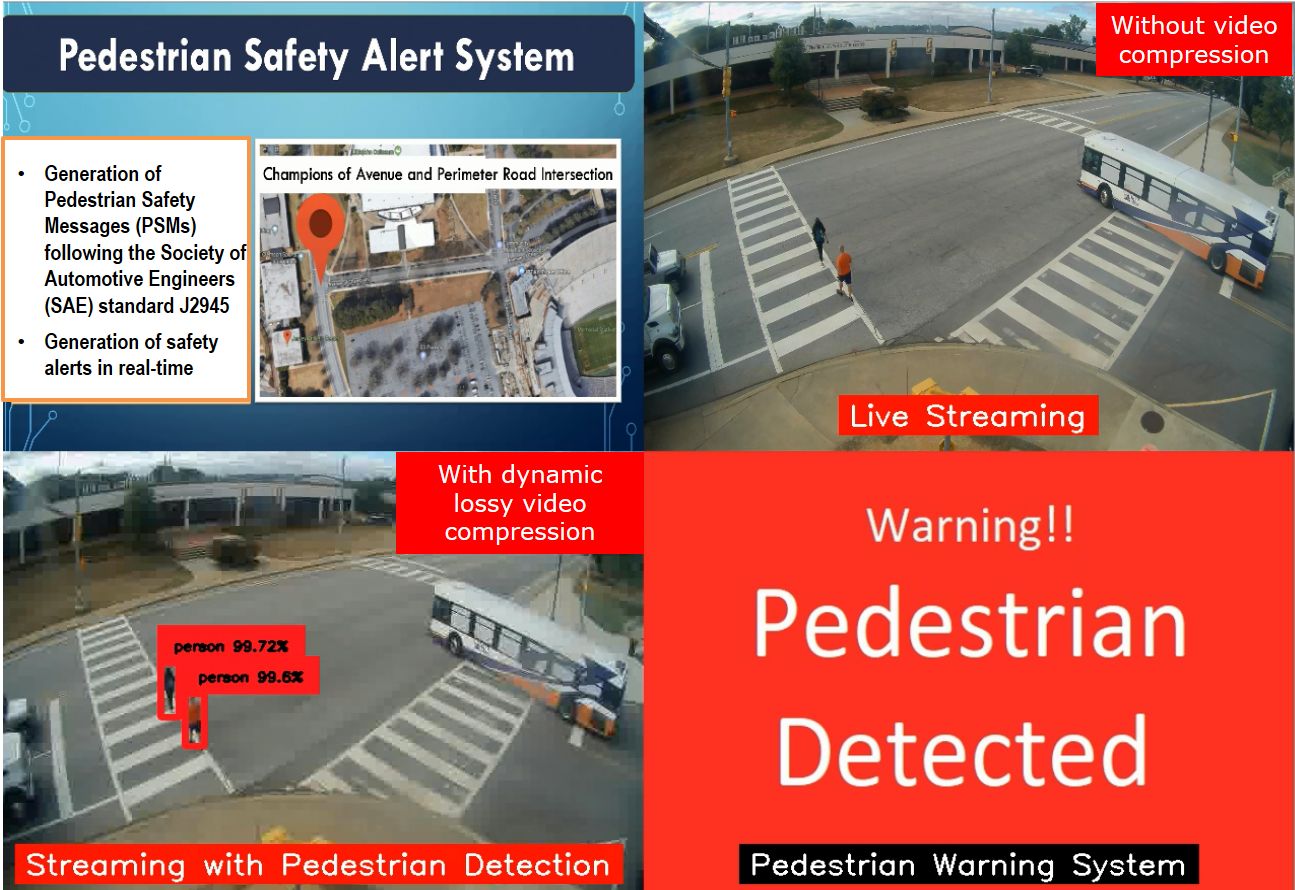
Dr. Mashrur “Ronnie” Chowdhury led a team at Clemson University developed a computer vision-based software that processes information from video cameras to generate alerts for at-risk pedestrians at intersections. This software uses the error-bounded lossy compression (EBLC) strategy to reduce the communication bandwidth requirements under different environmental conditions.
Our EBLC strategy dynamically changes the video compression level depending on different environmental conditions (i.e., rain, dark and cloudy) in order to maintain a high pedestrian detection accuracy. The EBLC strategy can reduce the communication bandwidth usage of a video feed, which allows more videos to be transmitted concurrently through a fixed bandwidth. Furthermore, dynamic EBLC significantly reduces the storage requirements to archive videos for offline analysis. The generated PSMs using our EBLC technique can generate a pedestrian warning to alert connected vehicles and pedestrians, and ultimately improve safety while reducing pedestrian-vehicle conflicts. The vision-based approach generates PSMs in real-time following the standard of the society of automotive engineers (SAE), which can be used by any connected vehicle pedestrian safety applications.
